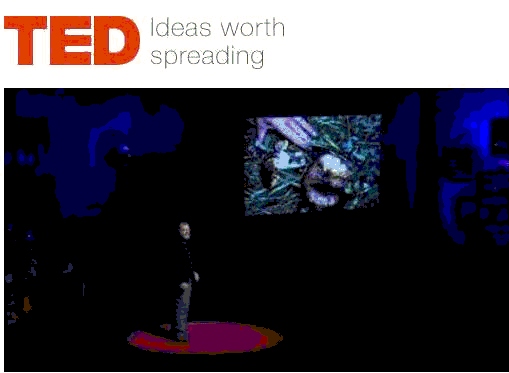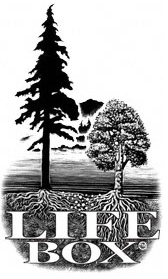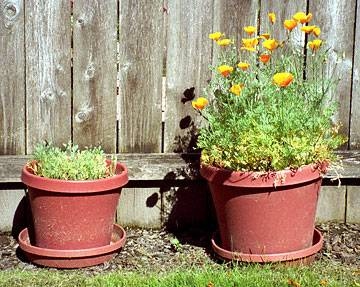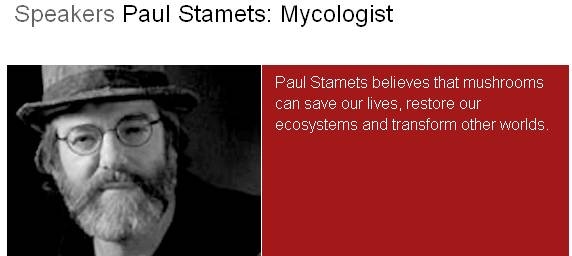Lugol’s Iodine Free S&H
J.Crow’s® Lugol’s Iodine Solution. Restore lost reserves.
Energy Awareness Course
Use CureZone kode to get a free session!
Heal Gut Dysbiosis
Remove the gunk and repopulate with probiotics.
Turmeric Bowel Cleanse
Hulda Clark Cleanses
Lugol’s Iodine Free S&H
J.Crow’s® Lugol’s Iodine Solution. Restore lost reserves.
Energy Awareness Course
Use CureZone kode to get a free session!
Heal Gut Dysbiosis
Remove the gunk and repopulate with probiotics.
Turmeric Bowel Cleanse
Hulda Clark Cleanses
Paul Stamets On 6 Ways Mushrooms Can Save The World
J.Crow’s® Lugol’s Iodine
Free S&H.Restore lost reserves.J.CROW’S®Lugol’s Iodine Solution
Watch the TED video here:
Cleaning polluted soil, creating new insecticides, treating smallpox and even the flu ... in 18 minutes, he doesn't get all the way through his list, but he has plenty of time to blow your mind.
…
Do you want some good news? Listen to this guy.
Intuitive to most humans, the earth is living, breathing entity. This Ted talk helps to confirm what many a Shaman has understood. Mushrooms are much more then magic!
They may be the secret to making the earth better.
This video is a must see!
It's the sort of thing you watch and feel so inspired by it you want everyone else you know to watch it too.
http://www.ted.com/talks/paul_stamets_on_6_ways_mushrooms_can_save_the_world....
Battelle Laboratories and I joined up, in
The mycelium absorbs the oil. The mycelium is producing enzymes -- peroxydases -- that break carbon-hydrogen bonds. These're the same bonds that hold hydrocarbons together. So the mycelium become saturated with the oil, and then, when we returned 6 weeks later, all the tarps were removed, all the other piles were dead, dark, and stinky. We came back to our pile, it was covered with hundreds of pounds of oyster mushrooms –
… -- and the color changed to a light form. The enzymes re-manufactured the hydrocarbons into carbohydrates -- fungal sugars.
.. the entire pile was a green berm of life. These are gateway species. Vanguard species that open the door for other biological communities.
….So I invented burlap sacks -- "bunker spawn" -- and putting the mycelium, using storm blown debris,
(diagram of how to bury sacks for waste cleanup)
-- you can take these burlap sacks and put 'em downstream from a farm that's producing E. coli, or other wastes, or a factory with chemical toxins, and it leads to habitat restoration.
NEW FROM FUNGI PERFECTI
|
http://www.fungi.com/mycogrow/index.html
These poppies were planted by my wife at the same time, in identical commercial potting soil, and exposed to identical amounts of water, sunlight, etc. The pot on the right was inoculated with Plant Success™ Tabs, the one on the left was not. What a difference! MycoGrow™ Micronized Endo/Ecto Seed Mix Give your seeds a head-start prior to planting with MycoGrow™ Micronized Seed Mix, a mixture of 11 species of endo- and ectomycorrhizal fungi. Directly upon germination, the seeds quickly mycorrhize with the beneficial fungal allies, enhancing growth and disease-resistance. Can be used with hydromulchers and blends well with other products. Sold in 1 ounce increments, which is sufficient to coat 1 pound of seeds.
http://www.abovetopsecret.com/forum/thread357845/pg1 Paul Stamets: 6 ways mushrooms can save the world
So, as far as insects go I will post some information from the Bioneers website that gives us some idea of how they are using Fungi. "Mushrooms have led me to a number of inventions, including a nontoxic insecticide. Metarhyzium is a unique group of mold fungi that targets termites and carpenter ants and many other insect species that damage crops and buildings. The pesticide industry has tried to use Metarhyzium spores to kill termites, but these insects aren’t stupid. They can smell the plague and they run away from it.
http://blog.ted.com/2008/05/paul_stamets.php
text of Paul Staments presentation… I love a challenge, and saving the earth is probably a good one. We all know the earth is in trouble. We have now entered in the 6X -- The sixth major extinction on this planet. I often wondered if there was a United Organization of Organisms -- otherwise known as U-O (pronounces it "uh-oh"), (laughter) -- and every organism had a right to vote, would we be voted on the planet or off the planet? I think that vote is occurring right now. I want to present to you a suite of 6 mycological solutions using fungi, and these solutions are based on mycelium. (graphic of Earth from space, growing a halo of mycelium; then photo of someone holding up a strand of mycelium pulled from the soil; then photo of mycelium growing on wood) The mycelium infuses all landscapes, it holds soils together, it's extremely tenacious -- this holds up to 30 thousand times its mass. They're the grand molecular disassemblers of nature, the soil magicians. They generate the humus soils across the land masses of Earth. We have now discovered that there is a multi-directional transfer of nutrients between plants, mitigated by the mycelium -- (drawing of trees with soil cross section, showing mycelium connections) so the mycelium is the mother that is giving nutrients from alder and birch trees, to hemlocks, cedars, and (photo of Dusty Yao walking through northwestern rainforest) Dusty and I, we like to say, on Sunday this is where we go to church. I'm in love with the old growth forest, and I'm a patriotic American because we have those. (photo of giant mushroom silhouetted against the sky) Most of you are familiar with portobello mushrooms. And frankly, I face a big obstacle when I mention mushrooms to somebody. They immediately think portobellos or magic mushrooms, their eyes glaze over, and they think I'm a little crazy. So I hope to pierce that prejudice forever with this group. We call it mycophobia, the irrational fear of the unknown when it comes to fungi. (series of shots of mushrooms growing on a hunk of organic medium) Mushrooms are very fast in their growth. (series of cuts illustrating speed of growth, ending with shot of mature mushrooms) Day 21, day 23, day 25. Mushrooms produce strong antibiotics. (shot of big mushrooms rotting in the wild) In fact, we're more closely related to fungi than we are to any other kingdom. A group of 20 eukaryotic microbiologists published a paper two years ago erecting Opisthokonta -- a super-kingdom that joins Animalia and fungi together. We share in common the same pathogens. Fungi don't like to rot from bacteria, and so our best antibiotics come from fungi. But here (refers back to photo) is a mushroom that's past its prime. After they sporulate, they do rot. But I propose to you that the sequence of microbes that occur on rotting mushrooms are essential for the health of the forest. They give rise to the trees, they create the debris fields that fuel the mycelium. (photo of yellow mushroom on the floor of the forest, exuding spores) And so we see a mushroom here sporulating. And the spores are germinating, (photo of a patch of mycelium on the forest floor, dissolving into the undergrowth, with Stamets' foot in photo to show scale) -and the mycelium forms and goes underground. In a single cubic inch of soil, there can be 8 miles of these cells. My foot is covering approximately 300 miles of mycelium. (microscopic movie of mycelium growing, branching out and thickening) This is photo-micrographs from Nick Read and Patrick Hickey. And notice that as the mycelium grows, it conquers territory, and then it begins the net. (final microscopic shot of fully netted mass of mycelia) I've been a scanning electron microscopist for many years, I've thousands of electron micrographs, and when I'm staring at the mycelium I realize that they are microfiltration membranes. We exhale carbon dioxide, so does mycelium. It inhales oxygen, just like we do. But these are essentially externalized stomachs and lungs. And I present to you a concept, that these are extended neurological membranes. (close up of one of the mycelium nets) And in these cavities, these microcavities form, and as they fuse soils, they absorb water. These are little wells. And inside these wells, then microbal communities begin to form. And so the spongy soil not only resists erosion, but sets up a microbial universe -- (shot of starscape with mycelium superimposed on it -- "The Opte Project") -that gives rise to a plurality of other organisms. I first proposed, in the early 1990s, that mycelium is Earth's natural internet. When you look at the mycelium, they're highly branched. And if there's one branch that is broken, then very quickly, because of the nodes of crossing -- internet engineers maybe call them "hot points" -- There's alternative pathways for channeling nutrients and information. The mycelium is sentient. It knows that you are there. When you walk across landscapes, it leaps up in the aftermath of your footsteps trying to grab debris. So, I believe, the invention of the computer internet is an inevitable consequence of a previously proven biologically successful model. The earth invented the computer internet for its own benefit, and we, now, being the top organism on this planet, is trying to allocate resources in order to protect the biosphere. (article on dark matter with rendering of "Cobweb of dark matter") Going way out, dark matter conforms to the same mycelial archetype. I believe matter begets life, life becomes single cells, single cells become strings, strings become chains, chains network. And this is the paradigm that we see throughout the universe. (photo of Earth from space) Most of you may not know that fungi were the first organisms to come to land. They came to land 1.3 billion years ago, and plants followed several hundred million years later. How is that possible? (electron micrograph of mycelium holding mineral crystals) It's possible because the mycelium produces oxalic acids, and many other acids and enzymes, pockmarking rock and grabbing calcium and other minerals, and forming calcium oxalates. Makes the rocks crumble, and the first step in the generation of soil. (slide of chemical models of oxalic acid (C2H2O4; HOOCCOOH) and calcium oxalate (CaC2O4)) Oxalic acid is two carbon dioxide molecules joined together. So fungi and mycelium sequester carbon dioxide in the form of calcium oxalates. And all sorts of other oxalates are also sequestering carbon dioxide through the minerals that are being formed and taken out of the rock matrix. (photo of geologist in the field, examining a large fossil of Prototaxites) This was first discovered in 1859, this is the photograph by Franz Hueber, this photograph's taken 1950s in (Artist's rendering of Devonian landscape with towering Prototaxites) Across the landscapes of Earth were dotted these giant mushrooms. All across most land masses. And these existed for tens of millions of years. Now we've had several extinction events, and as we march forward, 65 million years ago -- most of you know about it -- we had an asteroid impact. The earth was struck by an asteroid, a huge amount of debris was jettisoned into the atmosphere. Sunlight was cut off, and fungi inherited the earth. Those organisms that paired with fungi were rewarded, 'cause fungi do not need light. More recently, at (satellite photo of the The largest organism in the world is in eastern (overhead shot of forest landscape in eastern The largest organism on the planet is a mycelial mat, one cell wall thick. How is it that this organism can be so large, and yet be one cell wall thick, whereas we have 5 or 6 skin layers that protect us? (electron micrograph of mycelium mass) The mycelium, in the right conditions, produces a mushroom, (photo of mushroom poking through a parking lot) -- it bursts through with such ferocity it can break asphalt. We were involved with several experiments. I'm going to show you 6, if I can, solutions for helping to save the world. (photo of scientists working on experiment described below) Battelle Laboratories and I joined up, in (photo of oil getting captured by mycelium ring) The mycelium absorbs the oil. The mycelium is producing enzymes -- peroxydases -- that break carbon-hydrogen bonds. These're the same bonds that hold hydrocarbons together. So the mycelium become saturated with the oil, and then, when we returned 6 weeks later, all the tarps were removed, all the other piles were dead, dark, and stinky. We came back to our pile, it was covered with hundreds of pounds of oyster mushrooms -- (photo of their pile, covered in mushrooms) -- and the color changed to a light form. The enzymes re-manufactured the hydrocarbons into carbohydrates -- fungal sugars. (photo of giant & healthy mushroom on the pile) Some of these mushrooms are very happy mushrooms. They're very large. They're showing how much nutrition that they could've obtained. But something else happened, which was an epiphany in my life. They sporulated, the spores attract insects, the insects laid eggs, eggs became larvae. Birds then came, bringing in seeds, and our pile became an oasis of life. (shot of their pile with grass growing on it) Whereas the other 3 piles were dead, dark, and stinky, and the PAH's -- the aromatic hydrocarbons -- went from 10 thousand parts per million to less than 200 in 8 weeks. The last image we don't have -- the entire pile was a green berm of life. These are gateway species. Vanguard species that open the door for other biological communities. (photo of man holding burlap sack full of mycelium) So I invented burlap sacks -- "bunker spawn" -- and putting the mycelium, using storm blown debris, (diagram of how to bury sacks for waste cleanup) -- you can take these burlap sacks and put 'em downstream from a farm that's producing E. coli, or other wastes, or a factory with chemical toxins, and it leads to habitat restoration. (photo of woman and other workers laying down burlap sacks in a field) So we set up a site in Mason County, Washington, and we've seen a dramatic decrease in the amount of coliforms, and I'll show you a graph here- (somewhat illegible graph showing results described below) -this is a logarithmic scale, 10 to the 8th power, there's more than a 100 million colonies per gram, and 10 to 3rd power is about a thousand. In 48 hours to 72 hours, these 3 mushroom species reduced the amount of coliform bacteria 10,000 times. Think of the implications. This is a space conservative method that uses storm debris -- and we can be guaranteed that we will have storms every year. (Dusty So this one mushroom, in particular, has drawn our interest over time. This is my wife Dusty with a mushroom called Fomitopsis officinalis -- Agaricon. It's a mushroom exclusive to the old growth forest, that Dioscorides first described in 65 A.D. as a treatment against consumption. This mushroom grows in (Stamets holding Agaricon, it's as large as his torso) This is extremely rare fungus. Our team, and we have a team of experts that go out -- We went out 20 times in the old growth forest last year, we found one sample to be able to get into culture. Preserving the genome of these fungi in the old growth forest, I think, is absolutely critical for human health. (series of micrographs of mushroom spores) I've been involved with the U.S. Defense Department BioShield program. We submitted over 300 samples of mushrooms that were boiled in hot water, and mycelium harvesting is (sic) extracellular metabolites -- And a few years ago, we received these results. (table showing activity of mushroom strains against pox virus) We have three different strains of Agaricon mushrooms that were highly active against pox viruses. Dr. Earl Kern, who's a smallpox expert of the U.S. Defense Department, states that any compounds that have a Selectivity Index of 2 or more are active, 10 or greater is considered to be very active. Our mushroom strains were in the highly active range. There's a vetted press release that you can read -- it's vetted by DOD, if you Google "Stamets" and "smallpox" -- or you can go to npr.org and listen to a live interview. So, encouraged by this, naturally we went to flu viruses. (table of "Highly Active Mushroom Strains Against Flu Viruses" showing reactivity of various species) And so, for the first time I am showing this. We have 3 different strains of Agaricon mushrooms highly active against flu viruses. Here's the Selectivity Index numbers -- against pox, you saw 10s and 20s -- now against flu viruses, compared to the ribavirin controls, we have an extraordinarily high activity. And we're using a natural extract within the same dosage window as a pure pharmaceutical. We tried it against flu A viruses -- H1N1, H3N2 -- as well as flu B viruses. So then we tried a blend, and in a blend combination we tried it against H5N1, and we got greater than a thousand Selectivity Index. (applause) I then -- I then think that we can make the argument that we should save the old growth forest as a matter of national defense. (applause) (photo of array of Petri dishes containing spores) I became interested in entomopathogenic fungi -- Fungi that kill insects. Our house is being destroyed by carpenter ants. I went to the EPA homepage, and they were recommending studies with metarhizium species of a group of fungi that kill carpenter ants, as well as termites. I did something that nobody else had done. I actually chase the mycelium when it stopped producing spores. These are spores -- this is in their spores. I was able to morph the culture into a non-sporulating form. (two Petri dishes with new cultures) And so the industry has spent over a 100 million dollars specifically on bait stations to prevent termites from eating your house. But the insects aren't stupid, and they would avoid the spores when they came close, and so I morphed the cultures into a non-sporulating form -- (photo of dish sitting beside a wall, holding new mushroom culture) -- and I got my daughter's Barbie doll dish, I put it right where a bunch of carpenter ants were making debris fields, every day, in my house, (photo of ants devouring mycelium) -- and the ants were attracted to the mycelium, because there's no spores. They gave it to the queen. One week later, I had no sawdust piles whatsoever. And then, a delicate dance between dinner and death -- (dead ant covered in mycelium) -- the mycelium is consumed by the ants, they become mummified, and boing -- (ant with a mushroom growing out of it) -- a mushroom pops out of their head. (laughter and moans of disgust) Now after sporulation, the spores repel. So the house is no longer suitable for invasion. So you have a near-permanent solution for re-invasion of termites. (shot of exterior of house w/ construction equipment, followed by shot of patent form) And so my house came down, I received my first patent against carpenter ants, termites, and fire ants, (photo of more Petri dishes and spore prints, followed by another patent form) -then we tried extracts, and lo and behold, we can steer insects to different directions. This has huge implications. I then received my second patent -- and this is a big one. It's been called an "Alexander Graham Bell" patent -- It covers over 200 thousand species. This is the most disruptive technology, I've been told by executives of the pesticide industry, that they have ever witnessed. This could totally revamp the pesticide industries throughout the world. You could fly a hundred PhD students under the umbrella of this concept, because my supposition is that entomopathogenic fungi, prior to sporulation, attract the very insects that are otherwise repelled by those spores. (photo of "Life Box," "The Way to Re-Green the Planet", then photo of someone opening one) And so I came up with a Life Box. 'Cause I needed a delivery system. The Life Box -- you're gonna be getting a DVD of the TED conference, (photo of empty cardboard box in a dish being sprinkled with soil, then being watered, finally shot of spores growing on cardboard) -- you add soil, you add water, you have mycorrhizal and endophytic fungi as well as spores, like of the Agaricon mushroom. The seeds, then, are mothered by this mycelium. (photo of mycelium rich soil in box with trees sprouting in it) And then you put tree seeds in here, and then you end up growing -- potentially -- an old growth forest from a cardboard box. (photo of path in a forest) I want to re-invent the delivery system, and the use of cardboard around the world, so they become ecological footprints. If there's a YouTube-like site that you could put up, you could make an interactive Zip Code specific -- where people could join together, and through satellite imaging systems, through Virtual Earth or Google Earth, you could confirm carbon credits are being sequestered by the trees that are coming through Life Boxes. (shot of UPS guy handing a box of shoes to girl) You could take a cardboard box delivering shoes, you could add water -- I developed this for the refugee community -- (shot of someone watering soil filled box, which then fills with plants) corns beans and squash and onions -- I took several containers, my wife said if I could do this, anybody could. (shot of back porch garden, before and after planting) And I ended up growing a seed garden. Then you harvest the seeds -- and thank you, Eric Rasmussen, for your help on this -- (graphic -- "Harvesting the seed garden" -- photo of two girls harvesting garden -- "Time from germination to seed harvest: approximately 4-5 months", then photo of Dusty Yao harvesting the corn) And then you're harvesting the seed garden, (photo of kernels encased in mycelium, about to be wrapped around cobs) Then you can harvest the kernels, and then you just need a few kernels, I add mycelium to it, (photo of wrapped/inoculated cobs, one side beginning to grow mushrooms, the other side starting off empty) and then I inoculate the corn cobs. Now, three corn cobs, no other grain -- lots of mushrooms begin to form -- too many withdrawals from the carbon bank. And so, this population will be shut down. But watch what happens here. (points to formerly empty side -- series of shots showing the mushrooms growing on the cobs) The mushrooms then are harvested -- but, very importantly -- the mycelium has converted the cellulose into fungal sugars. And so I thought, how could we address the energy crisis in this country? And we came up with Econol. (photo of vial of "Econol" with burning wick) Generating ethanol from cellulose using mycelium as an intermediary -- and you gain all the benefits that I've described to you already. But to go from cellulose to ethanol is ecologically unintelligent, and I think that we need to be econologically intelligent about the generation of fuels so we build the carbon banks on the planet, renew the soils -- these are a species that we need to join with. I think engaging mycelium can help save the world. Thank you very much. |
||||||||
This Forum message belongs to a larger discussion thread. See the complete thread below. You can reply to this message!
-
Paul Stamets On 6 Ways Mushrooms Can Save The Worl...
 RRR HealthEnthusiast
14 y
5,428
RRR HealthEnthusiast
14 y
5,428
This is the position of the above message within the thread.
CureZone Newsletter is distributed in partnership with https://www.netatlantic.com
Contact Us - Advertise - Stats
0.141 sec, (15)




